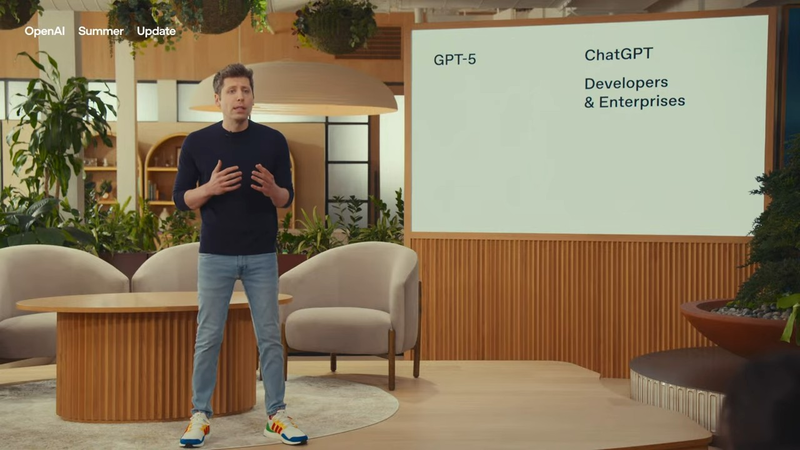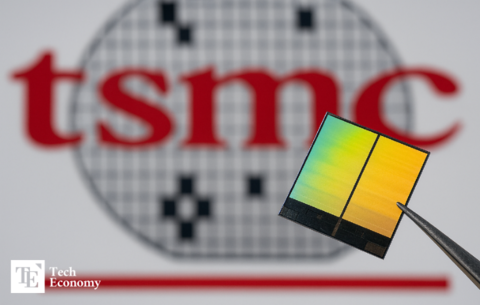OpenAI Unveils Next-Generation ‘GPT-5,’ Evolving Into a Unified AI Integrating General and Reasoning Capabilities
Input
Modified
Altman “GPT-5 Feels Like Conversing With a Doctoral-Level Expert” Significant Advancements Across Computation, Coding, Writing, and Medicine Record-Breaking Benchmark Scores With Reduced Token Consumption

OpenAI has launched its next-generation artificial intelligence model, “GPT-5,” marking the company’s first-ever unified model that merges its general-purpose and reasoning capabilities. Released two years after GPT-4, the new iteration is designed to deliver enhanced performance across computation, practicality, and creativity, evolving into what the company describes as a “thinking partner” capable of not only responding to a wide spectrum of queries but also independently determining and delivering expert-level answers.
“A Significant Step Toward Artificial General Intelligence”
On August 7 (local time), OpenAI unveiled its latest generative AI model, GPT-5. Speaking in a pre-briefing on August 6, CEO Sam Altman hailed the release as “a major leap forward and an important step toward AGI.” He said, “This is the smartest, fastest, and most useful model we have ever built. If GPT-3 felt like conversing with a high school student, and GPT-4 with a college student, GPT-5 feels like talking to a doctoral-level expert.”
GPT-5 combines the capabilities of OpenAI’s general-purpose conversational model GPT-4o with its high-performance reasoning model o3 into a single integrated system. Users no longer need to choose between general or reasoning modes in ChatGPT, instead accessing a unified model that delivers both. Earlier this year, Altman acknowledged that the product lineup had become overly complex and vowed to simplify it. GPT-5 is now available to all users, with paid subscribers gaining access to a “GPT-5 Pro” tier offering higher usage limits and expanded reasoning capabilities.

Reduced Hallucination and Sycophancy, Advanced Writing Capabilities
GPT-5 delivers dramatic performance improvements across domains, with notable gains in mathematics, coding, writing, medicine, and visual understanding. According to OpenAI, hallucination—producing fabricated information—and sycophancy—indiscriminate agreement—have been substantially reduced, improving reliability. Its creative writing capabilities have also evolved, enabling the natural generation of free verse and rich literary metaphors. For example, GPT-5 can employ nuanced expressions such as “the black flag of a country that no longer exists” to convey subtle emotional tones.
In coding, GPT-5 can generate complex front-end websites, applications, or games with a single prompt. Early testers reported “remarkable improvements across the spectrum of software engineering,” noting its ability to modify intricate legacy codebases and handle design elements like spacing and typography with aesthetic sensibility. Some testers said the model showed clear progress in practical coding tasks—long a perceived weakness for OpenAI—surpassing rival Anthropic’s Claude Sonnet 4 in coding proficiency.
In the medical domain, GPT-5 tailors information based on a user’s knowledge level and local context, going beyond basic information delivery to proactively flag potential concerns and pose follow-up questions as an engaged “thinking partner.” OpenAI stressed, however, that the system cannot replace professional medical expertise. For sensitive “dual-use” areas such as biology, the company has implemented a new “safe completions” training approach, designed to avoid blanket refusals and instead provide the most useful information possible within safe boundaries.
On benchmarks, GPT-5 set new performance records: 94.6% on AIME 2025 (college-competitive mathematics), 74.9% on SWE-bench (software engineering), and 84.2% on MMMU (college-level multimodal problem-solving). The paid GPT-5 Pro tier scored 88.4% on GPQA (doctoral-level scientific queries). Alongside these gains, efficiency has improved markedly—prompt caching reduces redundant computation for repeated requests, while optimized input-output handling cuts token usage by up to 80%.
Intensifying Rivalry With xAI’s Grok and Google’s Gemini
The launch of GPT-5 is expected to further escalate the race for AI dominance. Last year, OpenAI attempted to boost next-generation performance through “Project Orion” but ran into scaling limitations. Its subsequent non-reasoning model, GPT-4.5, fell short of expectations and was quickly discontinued. These setbacks fueled skepticism about GPT-5. Originally expected in the first half of this year, the release was delayed amid speculation, with internal testing, server capacity expansion, and additional validation cited as contributing factors.
During the delay, competitors gained ground. Google released Gemini 2.5 Pro, and Elon Musk’s xAI rolled out Grok 4, both edging ahead in performance rankings. Some observers argued that GPT-5, rather than ushering in a new era, had become a catch-up model. According to AI benchmarking firm Artificial Analysis, Grok 4 topped the leaderboard with a score of 73, followed by Gemini 2.5 Pro at 70. OpenAI’s latest multimodal model at the time, GPT-4o, placed fifth with a score of 68.
In video AI, Google holds the upper hand. The company recently added an image-to-video feature to its video generation model, VEO 3. Powered by YouTube data, VEO 3 can produce up to eight seconds of high-resolution video from a single image and text description, complete with audio integration and animation effects. Google says that more than 40 million videos have been created in 159 countries using the VEO series, which has earned a reputation among general users as the most intuitive and polished video generation tool in terms of both speed and output quality.





















